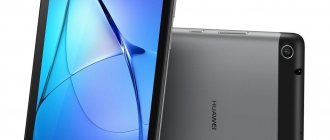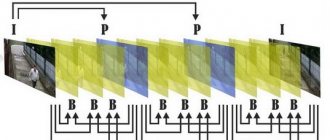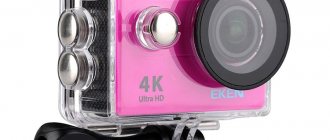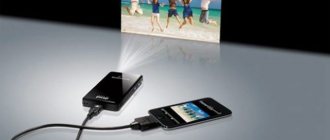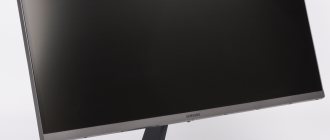At the end of summer 2020, Samsung announced the world's first sensors for smartphones with a resolution of 108 megapixels - ISOCELL Bright HMX. Xiaomi is already ready to adopt them. If you believe the rumors, it is on their basis that the main camera of the company’s new flagship Mi Mix 4 will be built - it is planned to be launched in October of this year. Prior to this, Chinese Apple introduced the relatively inexpensive Redmi Note 8 Pro with a 64 megapixel camera - this is the maximum value to date.
The best Telegram channel about technology (possibly)
At the same time, the entire line of new iPhones, which were shown at the Apple presentation on September 10, received a set of cameras of 12 megapixels each. An untrained user will immediately assume that the standard American flagship will take photographs and record videos many times worse than the Chinese, which are also noticeably cheaper. But practice proves the opposite. Matrix resolution is far from the most important thing in a camera, and now we will explain how it works in general.
The matrix consists of pixels that collect light
The number of pixels in a camera does not indicate whether it takes pictures well or not - this is the main thing to remember when choosing a new smartphone. It’s better to immediately watch shooting tests in real conditions - they will tell you more.
A set of cameras on the iPhone 11 Pro render. Source: ilirida.net
The two main components of any camera are the sensor and the lens. The first of them contains the notorious pixels, which collect the light entering them. This is needed to create an image. The larger each such point, the better. Its size affects the amount of light it can collect. There are tiny gaps between pixels that cause noise to appear in the final photo, so they need to be as large as possible.
It’s a pity that the matrix, which is especially important for smartphones, has a limited area. It cannot fit very many large pixels for a high-quality photo. But there can’t be too few dots either, because the detail of the resulting image depends on them. That is why it is very important to maintain the right balance between the number of pixels and their size. It turns out that installing a 108 MP sensor may not be a good idea just because of their size.
Currently, matrices for cameras in smartphones are made by Sony, Samsung and OmniVision. The first two companies are considered to be of the highest quality, but sometimes the latter also produces very smart models.
The structure of the camera module. Source: bmwcase.com
One of the main characteristics of the matrix is its sensitivity - ISO . It is responsible for the brightness of the image in different conditions. Modern smartphones make it possible to adjust this indicator during shooting in order to achieve the desired creative effect. Well, even on the iPhone you can adjust the ISO level, but for this you will need third-party software. By default, Apple closes this feature so as not to complicate the process of obtaining photos.
Of course, it is also important to take into account the size of the matrix or its diagonal. Not only the number and size of pixels that can fit on it depends on this, it also affects the maximum ISO level and many other characteristics.
Smartphone cameras with a resolution of 64 megapixels or more
Before concluding this material, let’s say a few words about the future, and a very foreseeable one at that. Already in the second half of 2019, we expect the first smartphones with 64 MP cameras to appear.
This time, it was not Sony, but Samsung, who entered the game first. In May 2019, the Korean giant introduced the S5KGW1 sensor. At 1/1.7″ in size, the sensor provides the same 0.8 micron base pixel size as 48-megapixel sensors, but due to the increased size it can accommodate 64 million pixels.
On the Samsung website, in addition to the list of mobile camera sensors, you can also find a number of simple demonstrations explaining pixel combining and other mechanisms
That is, we have before us the future leader in detailing for mobile photography. In addition, the new product is ready to offer a new ultra-fast focusing system, which will also not be superfluous. The appearance of devices with 64 megapixel cameras is now primarily expected in smartphones from Samsung itself. Koreans want to equip even their non-flagship gadgets with them.
However, the Japanese from Sony should respond very quickly. According to insiders, the Japanese sensor with a resolution of 64 megapixels is almost ready. Smartphones based on it will be released before the end of 2020.
In the near future, devices with new cameras will be shown by the Chinese Realme (owned by BBK) and Xiaomi. The latter will use 64 megapixel modules in two of its expected smartphones. The first will be Redmi Note 8. It will receive a Samsung sensor. The second a little later will be Mi Mix 4. Its camera equipment will include a more expensive and, obviously, high-quality 64 MP sensor from Sony.
We will supplement both this section and the entire material as a whole as new information and new smartphone models become available.
- about the author
- Recent publications
Raik
Igor Andreev is the author of articles for ITRew.ru and Our-Firefox.ru. I am passionate about modern technologies, I talk about them in my texts) Follow me — twitter.com
Raik recently posted (see all)
- All differences between Mi 10 and Mi 10T and 10T Pro (+table) - 10/01/2020
- Galaxy S20 FE vs S20, S10 and S10 Lite: which is better? — 09.25.2020
- All the differences between the Xbox Series S and the Xbox One S and X in terms of characteristics. What to choose? — 09/23/2020
Tell others:
- Click to share on Twitter (Opens in new window)
- Click here to share content on Facebook. (Opens in a new window)
- Click to print (Opens in new window)
- Click to share on Pinterest (Opens in new window)
- Click to share on Telegram (Opens in new window)
- Click to share on WhatsApp (Opens in new window)
The lens is responsible for focusing, clarity, viewing angle
Professional photographers believe that the lens is much more important than the camera itself. This is not surprising, because it is through the lens that light initially passes, which then hits the surface of the matrix with its pixels.
Dual camera in iPhone 7 Plus. Source: theverge.com
The main task of the lens is to obtain the least possible number of distortions and a picture of maximum quality. It is also responsible for focusing, focal length, clarity, viewing angle, and so on. Typically, lenses used in smartphones have multiple lenses. Some of them may be plastic, others glass. The latter are more often used in the most expensive gadgets - sometimes they are even protected with sapphire coating so that they are less scratched.
Among the most significant characteristics of lenses are the focal length and aperture size - this is well known to photographers who regularly purchase new ones and replace old ones. But in the case of smartphones there are some nuances.
Shooting on Google Pixel 3. Source: chepa.net
For example, the vast majority of smartphones use a fixed focal length - the distance to the subject. This is why they most often do not have the adjustable optical zoom that larger cameras use. On some smartphones, this situation can be overcome thanks to additional modules. Apple was one of the first to do this, adding an imitation of 2x optical zoom to the iPhone 7 Plus.
Most often, zoom in smartphones is implemented using a digital principle. In this case, the device takes only part of the information from the required area of the matrix and stretches it over the entire frame. Yes, the quality is worse, but there are no options. By the way, it is precisely because of the small size of the matrix that smartphones have standard wide-angle cameras. This gives manufacturers the opportunity to use a larger aperture, which also affects the quality of the image.
Aperture size is a characteristic of the width of the hole through which light enters the camera sensor. It is denoted by the letter “f” and written next to the number - the lower the better: f/11, f/8, f/5.6, f/4, f/2.8, f/1.8. Many modern smartphones have an aperture of f/2 and f/2.2. Top models may have f/1.8 and f/1.7, and Samsung flagships generally use cameras with an adjustable size - almost like in large cameras.
By the way, the background blur that can be achieved with a camera depends on the size of the aperture - this is especially important in portrait photography. Since it is relatively small in smartphones, manufacturers came up with the idea of cleaning the backs using neural networks. To do this, they connect additional cameras that measure the distance from objects, or try to do this only with the help of trained artificial intelligence.
Automatic and other types of focusing in smartphones
Depending on the type of focusing, smartphones are configured differently to shoot a particular object. The goal of this process is to have a clear image with good sharpness. But the process itself can occur in different ways.
Firstly , there are gadgets with and without autofocus support. In the first case, you can focus on a specific object regardless of the distance to it. This will allow you to photograph both near and far. In the second case, it will no longer be possible to focus on something relatively close. You will only be able to shoot something at a distance from the lens. This option is noticeably worse, but smartphones with it today are found only in the budget segment.
Secondly , if the camera does not have special sensors for automatic focusing, it uses contrasting areas of the image in the viewfinder for this. It’s the easiest and cheapest thing to do, but it doesn’t always work correctly. The worst thing about it, obviously, is given to objects with little contrast, as well as moving frames. This is now practically not used in flagship smartphones.
Honor View 10 with phase detection autofocus. Source: lowyat.net
Thirdly , the most common automatic focusing is phase focusing. Today it is used by Apple, Samsung, and many other companies. For it to work, there are special additional sensors at the edges of the matrix, the picture on which must match - this indicates that the focus is correct. This system works fast enough that you can use it to photograph even active sports.
Fourthly , recently laser focusing has also been used, which works on the principle of reflected light. It is considered the most accurate, but is very limited in effective distance - at a distance of 3 to 5 meters this system still works, and beyond that the beam is greatly scattered. That is why laser focusing is used only in conjunction with phase focusing. When the first one can no longer cope, the second one is connected - this is the only way to guarantee accuracy.
At the moment, the development of phase focusing is considered the most promising. Manufacturers are trying to increase the number of sensors that are responsible for it - the more there are, the more accurate it is.
Why image stabilization is needed and how it works
To get a clear enough photo, the device must be stationary during shooting. If you hold it in your hands, this is almost impossible to achieve. That is why stabilization is used: digital or optical.
Digital image stabilization (EIS) works based on smartphone software mechanisms. In this case, only the central part of the matrix is used for the photo, and the surrounding pixels remain in reserve. Information from them is needed if the device sees that the device is shaking. Then the image shifts across the sensor and creates the feeling that the frame is not moving. The results are quite good, but they rarely reach optical stabilization.
Diagram of a dual camera with stabilization in the iPhone XS. Source: smarthouse.com.au
Optical Image Stabilization (OIS) interacts with lenses found in smartphone lenses. They shift in the opposite direction from the direction of shaking. If we are talking about four-axis stabilization, then the lenses can move both in horizontal and vertical space. The matrix on which the light falls can also shift, but this method is used less frequently. Optical stabilization can be used simultaneously with digital stabilization.
Yes, stabilization significantly affects the quality of the resulting picture. This is clearly visible when shooting video, but also applies to photographs. If stabilization is not provided, it is unlikely that you will get a good photo.
Why do you need a 108-megapixel module in the S20 Ultra?
And this is an interesting question, because I still don’t quite understand what the use cases for a 108 or 64 MP module might be. My Xiaomi Mi 9 Lite also has a shooting mode at 48 megapixels, but in this case the quality suffers, so it is not yet entirely clear why this is needed. In addition, we all take photos for the sake of publishing on Instagram, which greatly compresses the photo, which makes the main plus of the 108-megapixel module unnecessary.
At the same time, the problem is also in the size of the photograph. Let's compare:
- A 12 MP image weighs 4.6 MB
- A 64 MP image weighs 22.7 MB
- A 108 MP image weighs 32.8 MB
And if we assume that you are an active Instagram user, it is not difficult to calculate that 30 photos will take up a whole gigabyte of memory. The 128 GB model's memory is enough for only 3840 photos, and I still don't take into account a bunch of different applications and their cache. For example, in a month I managed to take more than a thousand photos, and this despite the fact that I’m not particularly interested in this, so 108 megapixels are not yet entirely relevant in terms of optimal use of phone memory.
But that is not all. Gmail has a limit on the size of the file attached to a letter - it cannot exceed 25 megabytes. Funny, right? That is, you will not be able to share your 108-megapixel image with anyone without “dancing with a tambourine.” And for this reason, is it worth buying a phone for 70-100 thousand?
The operation of neural networks and other capabilities of modern cameras
In general, in addition to the matrix resolution, the camera has a lot of other characteristics that are worth paying attention to, for example: lens aperture size, focal length and focusing type, stabilization, and so on.
However, today it is very difficult to evaluate the real capabilities of the camera even with all these characteristics in front of your eyes. This is due to the fact that lately software mechanisms have increasingly come to the fore.
Realme XT smartphone with 64 MP camera. Source: xda-developers.com
For example, previously everyone was sure that in order to take a portrait photo with the effect of blurring the background, you needed an additional camera or related sensors. But Google managed to prove the opposite to everyone by implementing this system using one module. Moreover, it is its smartphones from the Pixel line that surpass all other gadgets in the quality of evening shooting without any additional sensors.
The latest trend is the simultaneous use of three or more modules for the main camera. Today this is found not only in expensive flagship smartphones, but also in cheap ones. We talked about this in more detail in a recent podcast episode.
Bottom line, it's best to watch real smartphone tests in real environmental conditions. We do these in our regular reviews. This is the only way to evaluate the strengths and weaknesses of cameras - not by the number of megapixels.
Megapixels and resolution
One megapixel (Mp) represents one million pixels, i.e. points from which a digital image is formed. For example, if the linear resolution of the matrix is 4000 pixels horizontally and 3000 vertically, then the total number of pixels will be 4000 × 3000 = 12,000,000 or 12 megapixels. However, you most likely know all this without me. I just wanted to remind you that megapixels do not measure resolution as such, and certainly not image quality, but rather the number of pixels. Megapixels can be said to determine a camera's potential ability to reproduce fine detail, provided the camera is equipped with an appropriate quality lens and a photographer who knows his stuff.
In other words, not every lens is sharp enough for the transition from sixteen to twenty-four, and even more so from twenty-four to thirty-six megapixels to somehow affect the detail of the image, and not every photographer is able to squeeze that potential maximum out of his equipment sharpness for which it is designed.
Replacing your old camera with a new one with more megapixels is only worth it if your current photos are impeccably sharp. In this situation, an increase in resolution can indeed lead to increased detail. If you have problems with sharpness, then it is naive to believe that buying a new camera will solve these problems. Additional megapixels will only exacerbate the flaws in the optics and the lack of discipline.
It is noteworthy that even a slight increase in linear resolution is accompanied by a significant increase in the number of megapixels. This is similar to calculating area. To double the number of megapixels, it is enough to increase the linear resolution by 41%, and doubling the linear resolution leads to a fourfold increase in the number of megapixels. It is for this insidious property that megapixels are so dearly loved by marketers, since it allows them to present very moderate progress as something revolutionary.
In fact, a twofold increase in the number of megapixels is not a revolution at all, it is just the minimum after which the increase in detail becomes noticeable for most people, and only if the detail was limited solely by the number of pixels, and not at all by lens aberrations or misses focusing, camera vibration and poor editing. Moreover, the contribution of the matrix resolution to the overall sharpness of the image rapidly decreases as the number of megapixels increases. Up to 10 megapixels, this contribution is very significant, from 10 to 20 megapixels it is no longer so significant, and with a resolution above 20 megapixels, the quality of the optics and the skill of the photographer unconditionally come to the fore.

